“Parfum”, nothing else. An interview with Anselm Skogstad of DER DUFT
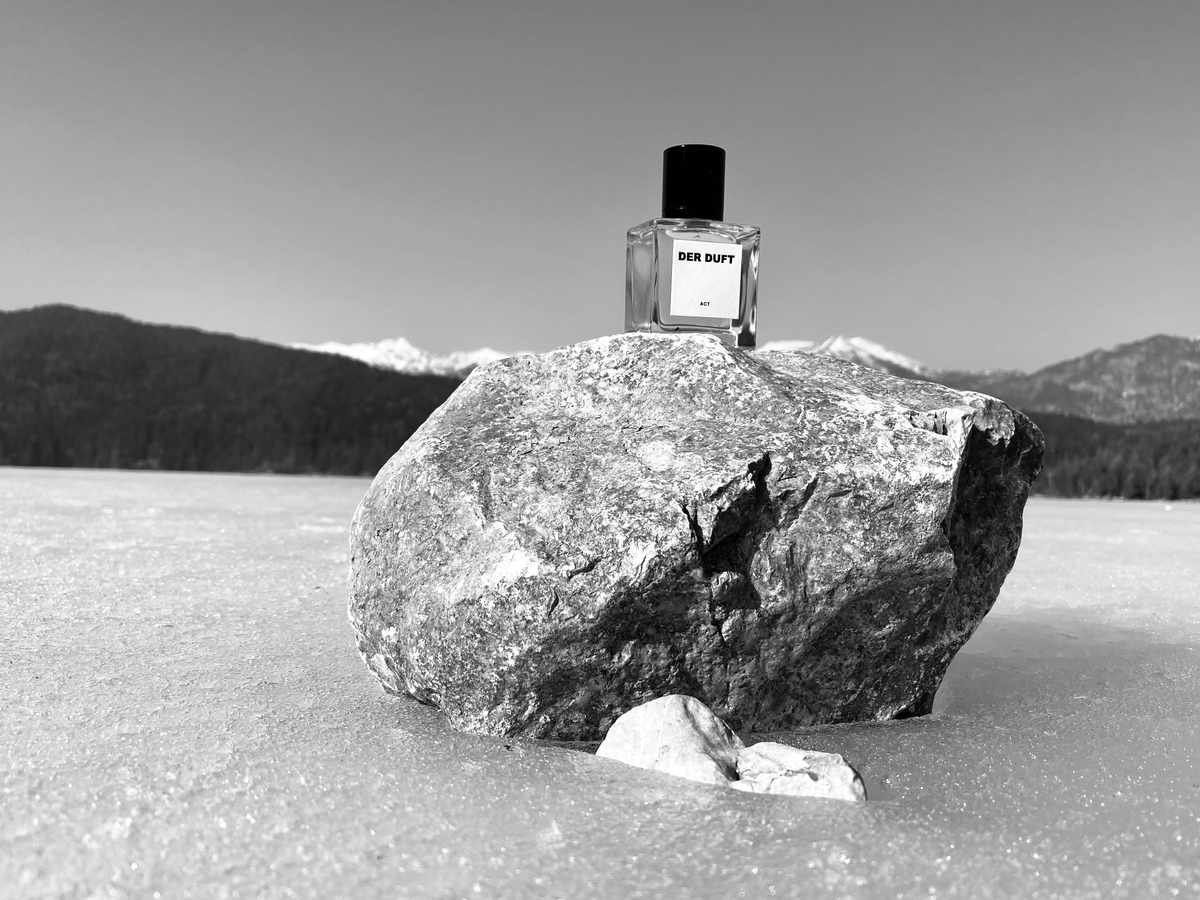
Milan 2019 at Esxence, the niche fragrance fair. After a panel discussion I was introduced to Anselm Skogstad -- from Munich/Germany like myself, living around the corner, early to mid-thirties perhaps, driven by a vision to launch his own line of perfumes. A short chat followed by the usual exchange of business cards and on we went on our tightly scheduled paths. At the fair, you always bump into many interesting people. I didn't have any specific business plans, but -- amongst other things -- I desperately wanted to immerse myself in the legendary restaurations of some classics at the booth of the Versailles perfume archive Osmothèque. Back in Munich, there were more meetings between us two perfume addicts, usually centered around the enthusiastic sampling of new entries into our respective collections. In the background, Anselm‘s vision developed into a concrete plan and finally, his line DER DUFT was launched in early 2020. Since then, sampling of his line's future fragrances during their development stages has become a much awaited highlight of our perfume sessions.
When I recently read a blogger’s interview with Anselm I noticed that, while I was familiar with the -- by now, six -- fragrances of his collection, I didn't know much about his line‘s concept, his cooperation with his perfumers, his work and background as a visual artist. This is how I got the idea to invite Anselm into my living room for a detailed interview where I wanted to distill a tangible picture of his brand, his fragrances and him as a person, and to present this image to the Parfumo community.
And so Anselm is now sitting on my sofa. Black sweater, black trousers, a colorful scarf as an eye catcher around his neck, I notice a ring of his own design on his finger; striking blue eyes. Visibly an artist but without the stereotypical wild hair and excentric shabby robe, but clearly the urban chic architect/designer/photographer type. Appropriately so, as Anselm has a background in art and documentary photography. Anselm is wearing „Act“, the most recent fragrance of his line, which immediately mixes up the sequence of my questions: „Is this your current favorite? Is there any one of your fragrances that you like best?“ -- Anselm responds: „No, I like and wear them all equally. They are all my babies.“ Somehow a reply to be expected. I place a soy cappuccino in front of him and continue with more focus. Not with the usual „How did the line originate?“ but with the question I was most interested in: Why did he choose Alexandre Ilian („Bubble“); Miguel Matos („Pride“ and „Cinematic“) and Prin Lomros („Act“) as perfumers for his collection and what is it that he likes about their respective styles?
His answer is refreshingly honest: „It was also a matter of chance, it just developed.“ Miguel, for example, he met by coincidence at the Esxence 2019. During a coffee together they clicked; this developed into a cooperation and, over time, a friendship. „When I decide to work with a perfumer it is not only that their style and their individual DNA of fragrances have to grip me, I also have to like them as a person“, Anselm explains. „It was also at the fair that I became aware of Alexandre even though we did not meet. I always found Prin‘s works exciting but I haven‘t had a chance to meet him personally yet, partly due to travel restrictions because of Corona.“ He keeps closely in touch with both of them via phone and email. In his view, all three of them have very specific signatures and very recognizable styles. „I like heavy fragrances and I like to wear them, such as oriental perfumes or Oud perfumes, things that -- according to the cliché -- don‘t fit my light skinned, blue eyed appearance. Generally, I like fragrances with an edge, which may polarize, like the ones composed by Miguel and Prin. Alexandre, however, is more of a perfectionist perfumer who fine-tunes his fragrances and develops the most delicate nuances -- although „Bubble“, in spite of its delicacy, remained a wonderfully polarizing fragrance.“ Right, in contrast to Anselm‘s other fragrances I have a hard time finding an access to „Bubble“.
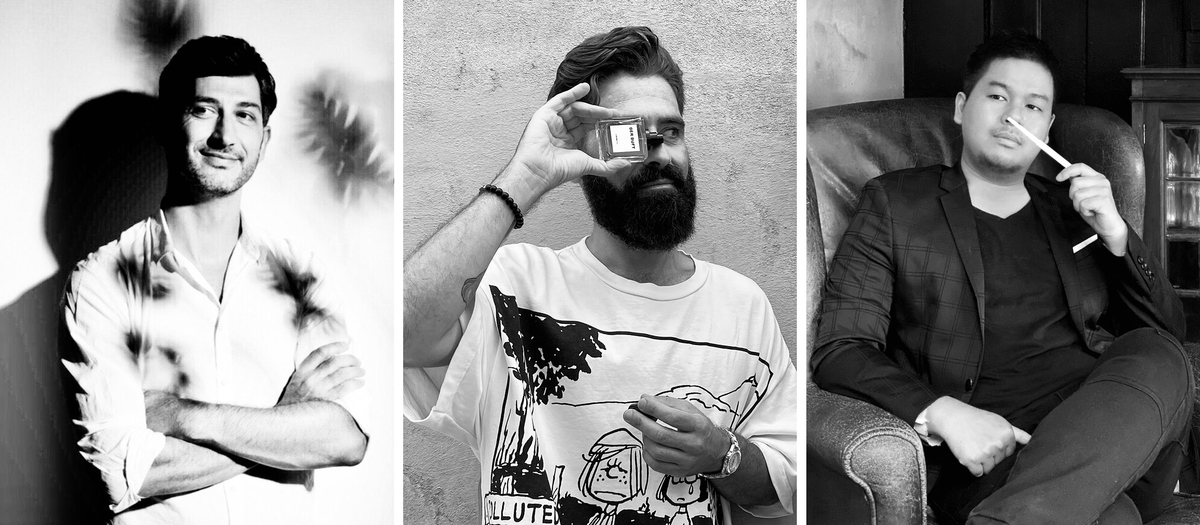
Alexandre Illan, Miguel Matos, Prin Lomros (from left to right)
On the subject of finetuning: if he likes a perfumer‘s sketch, do they continue tuning it at length? He finds both approaches exciting. With some fragrances it was worth „to go for another round“: „Act“, however, he accepted from Prin without any modification. Perfumers aren‘t service providers for him, but authors whose authorship he validates constantly. He is always looking to "elevate the individual perfumer's signature". This approach derives from Frédéric Malle‘s iconic Edition de Parfums which Anselm is very fond of and some of which are also part of his personal collection. That leads to an aside: „At Frédéric Malle, the perfumer does not get any direction for the cost of the fragrance‘s formula. Does that also apply to your line?“ Anselm is clear: „Yes! Though I am curious to see what the price tag is in the end,“ he adds jokingly. „What guidelines do you give to the perfumer, what does your perfumer‘s briefing look like?“ I’ve read that Anselm gives only a rough direction to his perfumers, which he confirms. „I love it when a perfumer surprises me. With Prin‘s fragrance, for example, we initially discussed a leather fragrance. In the end it became a vetiver fragrance.“
This approach gives the perfumer a maximum of creative freedom -- rare in an industry where many fragrances, not only the mainstream products, are designed on the drawing board and then have to go through the infamous focus group testing which eliminates the last bit of individuality, much to the perfumers' chagrin. Counter to this tendency, in Anselm's line, creative freedom is also reflected in the fact that he does not present his fragrances with a story as is customary all over in a world of consumer products in which marketing people claim that the story is at least as important as the product itself. „I want people who wear my fragrances not to be burdened by some story or guideline how they should feel about the fragrance. Everyone should approach my fragrances in their own personal way. I don‘t want to dress up my fragrances“, Anselm explains. His credo is the minimalist concept of his brand: „DER DUFT“ -- the scent -- is what's on the label and that is what you get. A scent that, ideally, touches and moves you, on an emotional level“. „To leave your customers without any, say, instruction, isn‘t that perhaps a competitive disadvantage?“, I contemplate. Anselm doesn‘t think so -- sometimes he gets asked for a background story, but mostly people like not being pushed around by a bunch of pretentious copy.
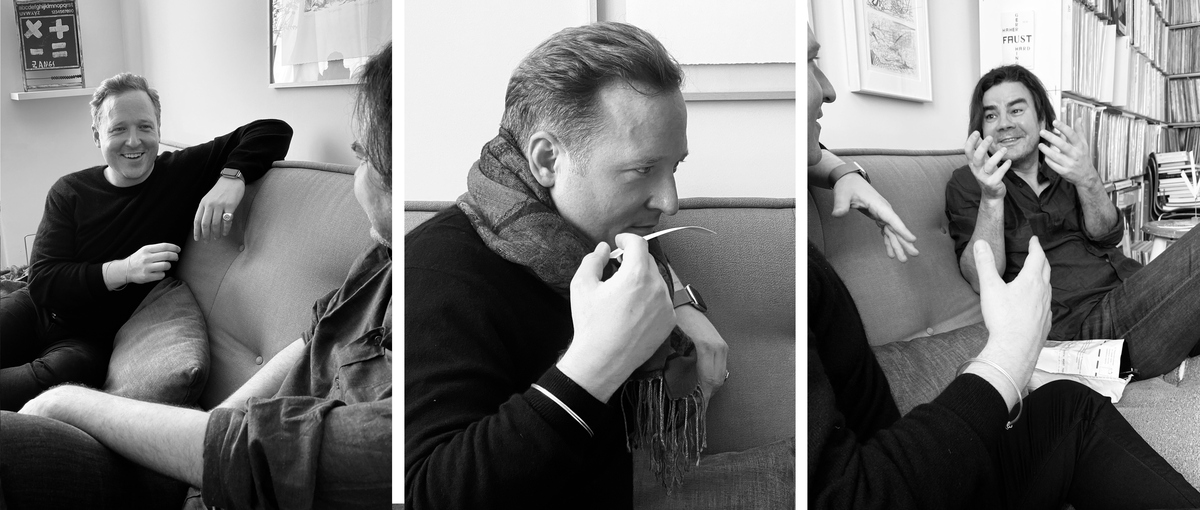
Anselm Skogstad, Parfumo member Costello (from left to right)
„And what about your fragrances‘ names“, I ask Anselm since I realized in our previous meetings that he wrestles with his fragrances‘ names, evaluates and frequently discards them. „I have written down a long list of names which I can imagine for my fragrances. In the process of of a fragrance‘s creation a fitting name crystallizes. But the perfumer still has a say, since he will be the one associated with the fragrance and its name“, he explains. The names must be catchy, they should inspire curiosity, but also shine, not be limited to one interpretation so everyone can choose for themselves how they want to interpret the name. „Act“, for example, can be a nude, part of a play or a demand for activity. „I want to give total freedom here, too, just like with not presenting a story. I also struggled for a long time with the decision whether I should publish perfume notes for the fragrances.“
During our perfume testing sessions it struck me how Anselm, who is a trained perfumer, meticulously avoids describing perfumes by notes. He visibly struggles with the issue of notes as a basis for fragrance descriptions: „Notes are a special subject. In my view -- and I don‘t want to sound arrogant -- trying to describe fragrances by notes works only to a very limited degree. For me only the result counts, the fragrance‘s emotional expression, not the „how“. When you look at a wonderful painting, you don‘t ask what pigments the artist used.“ Also, different people feel very differently about perfume notes. To one, lavender smells one way, to someone else it smells another way. When I come across a fragrance that I am enthusiastic about, I never ask myself which ingredients went into its composition. Just like I enjoy a good meal without asking myself how many grams of rosemary the chef used. So publishing the notes of my perfumes is only to give a very general orientation.“ This attitude demands a good deal of alternative linguistic imagination in the discussion about fragrances. Of course, one can establish relations to the areas of other senses -- a method that is often used on Parfumo, too, when describing a citrus note as a piccolo flute or by the color yellow, a sandalwood note as a cello or the color brown. Which leads me to the question whether Anselm, being a visual artist as well, experiences synesthesia: „Unfortunately, not really, but I like it if people have this talent. I rarely connect perfumes to specific images, colors, music or memories, and they rarely send me on imaginary trips. I stay by myself with my emotions, enjoy the presence of the concrete moment. This defies verbalisation. Only the person experiencing the scent counts, what they smell and -- most importantly -- their emotion when smelling.“
Since little can be added to this hardly arguable statement I suggest a short break to refresh our dry throats with ice cold fresh salted lime soda, my favorite soft drink from India. Finally, I want find out about Anselm‘s work as a perfumer when he created two fragrances of his line („Grasse“ and „Monopteros“), about his activities as a visual artist, about some trivia like his favourite perfumes and fragrances and about the future of his line, and at last -- in reverse chronology -- how it all began.

Different perfumers have different modes of operation. Some mainly compose their fragrances in their heads, in extreme cases entirely, like the iconic perfumer Jean Charles, creator of „Tabu“, „Miss Dior“ or „Shocking“ who in 1946 came up with the classic fragrance „Ma Griffe“ during a phase when he had completely lost his olfactory sense. Others immerse themselves in an enthusiastic and open-ended trial and error mode with the ingredients that happen to be available. What is Anselm‘s approach as a perfumer? „A mixture of both. Of course I know the olfactory profile of certain ingredients and I have an idea of which combinations work, sometimes also a theoretical vision of what I want to try. But then a trial and error process follows which sometimes can fail completely. But I don‘t find the approach very interesting, to me it is the result that counts.“ To him a perfumer is not necessarily someone who studied for years at one of the relevant schools in France but anyone who succeeds in composing a fragrance that smells good and fascinates at least a few people. After all, one can be an artist or work artistically without having studied at an art academy. „Anyone can have his own view of this. That is OK“, he adds. Creating perfumes is not witchcraft, but something anyone can learn. Anyone can create something outstanding: „Some perfumers with perfect technical training do boring stuff, yet others have a self-taught garage workshop approach and, with passion, create wonderful fragrances that reach and move me.”
„Is creating perfumes art or craft to him?“ -- this is a question I don‘t want to skip even though almost every perfumer is regularly confronted with it. What follows is a brief discussion of the principles and nature of art. After a while the views are sorted and our common answer is: „Art!“ Why? Because -- following a modern interpretation -- art can express emotions without relying on an education in the classical sense -- see above. But craft necessarily requires specialized skill. Speaking about art, I ask Anselm if his work as a visual artist, mainly as a photographer, can be compared to his work as a perfumer. His answer comes quickly: „No, not really. The center of my work as a photographer were always people: getting close to people. I often relied on a hidden camera in order to ‚freeze‘ candid moments. Scent is more of an intangible aura, a narrative in space and time. These two art forms are hardly comparable to me.“ However, there are points of contact between his photos and his fragrances: when he posts pictures on DER DUFT accounts in social media, he presents his flasks within architecture or nature photographs. Why, if, as he says, he does not want to add other levels of intent to his fragrances? I sense a fuzziness or inconsistency in his brand concept. Anselm counters: „No, those photos are not intended as adding any meaning. All the motives are abstract, mostly only a play of light or texture. A kind of professional stage for the flasks that is supposed to spark curiosity, not distract“.
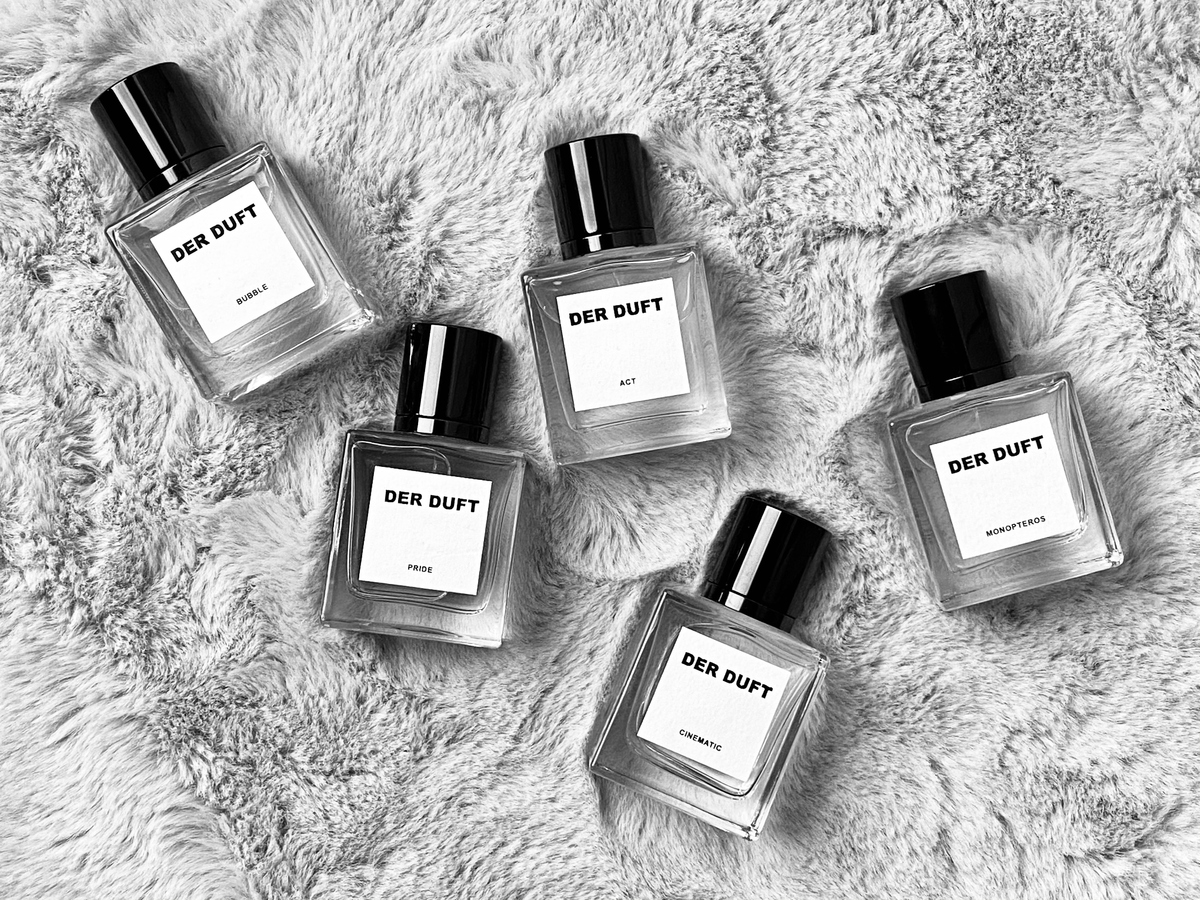
The door bell rings. DHL? I am expecting an e-bay package with the -- sadly discontinued -- 2013 version of 'Yohji Homme'. I jump to the door. Yes, DHL! I stop myself from opening the package and sampling the fragrance right away, apologize for the interruption and move on to something that is always fun: asking perfumers which other perfumers they like.
„You used to rave about a French perfumer“, I initiate. „A Frenchman?“ Anselm draws a blank for a second. „Dominique Ropion?!“ „Of course! ‚Promise‘ which he created for Frédéric Malle is one I love. But also others of his creations.“ Any others? The name Quentin Bisch is mentioned, Alessandro Gualtieri of Nasomatto and last but definitely not least, Geza Schön: „It’s great what he's achieved. A very special character. I like how he selects his projects freely and not primarily for commercial reasons.“ The fragrances that he made for the Munich jewelry designer Saskia Diez, ‚Gold‘ and ‚Silver‘, both hit the right spot for him: „Because they both smell exactly like one imagines the scents of gold and silver. Here Geza was spot-on.“ Which perfumers would he like to see in his own line in the future? Of course he has several in mind. Whether it works out is another matter: „We'd have to cooperate as equals. There must be a real interest in the brand DER DUFT“-- Anselm is very clear about this. He would not work with a perfumer who considers the project one commission among dozens, no matter how famous and exciting the collaborator. He also won't rule out a repeat cooperation with one of the perfumers who have already worked for the collection. The fact that the perfumers he has worked with want to continue cooperating with him, he says, is a nice compliment to the brand but still he feels more challenged to work with new perfumers. „I very much look forward to that.“ Which leads us to the future of DER DUFT. The fall will certainly bring a new fragrance, Anselm reveals. That would be two this year, a manageable launch sequence that, given the launch frenzy of some lines, is downright likeable to me. Right now, he is not working on original compositions: „Managing the brand and following the composition process of my perfumers is enough work. Being a good perfumer is a full-time job, you cannot do that on the side. You need to stay focused.”
One last question is missing -- how did it all start? "I was already a perfume fan as a teenager, quite amateurishly. But then that took a back seat as I focused on my work as a visual artist," Anselm says. As he was at a crossroads in his career at the time, it came in handy that this passion was reawakened by a friend and perfume connoisseur from Hong Kong. He decided that he really wanted to find a career in perfume: "I thought a lot about what that could be in concrete terms. In the end, though, the idea of launching my own brand was what appealed to me the most." He had already registered the domain derduft.com, which to his astonishment had not been registered. At the beginning of 2020 he decided that this was the name he wanted for his brand. The rest is history.
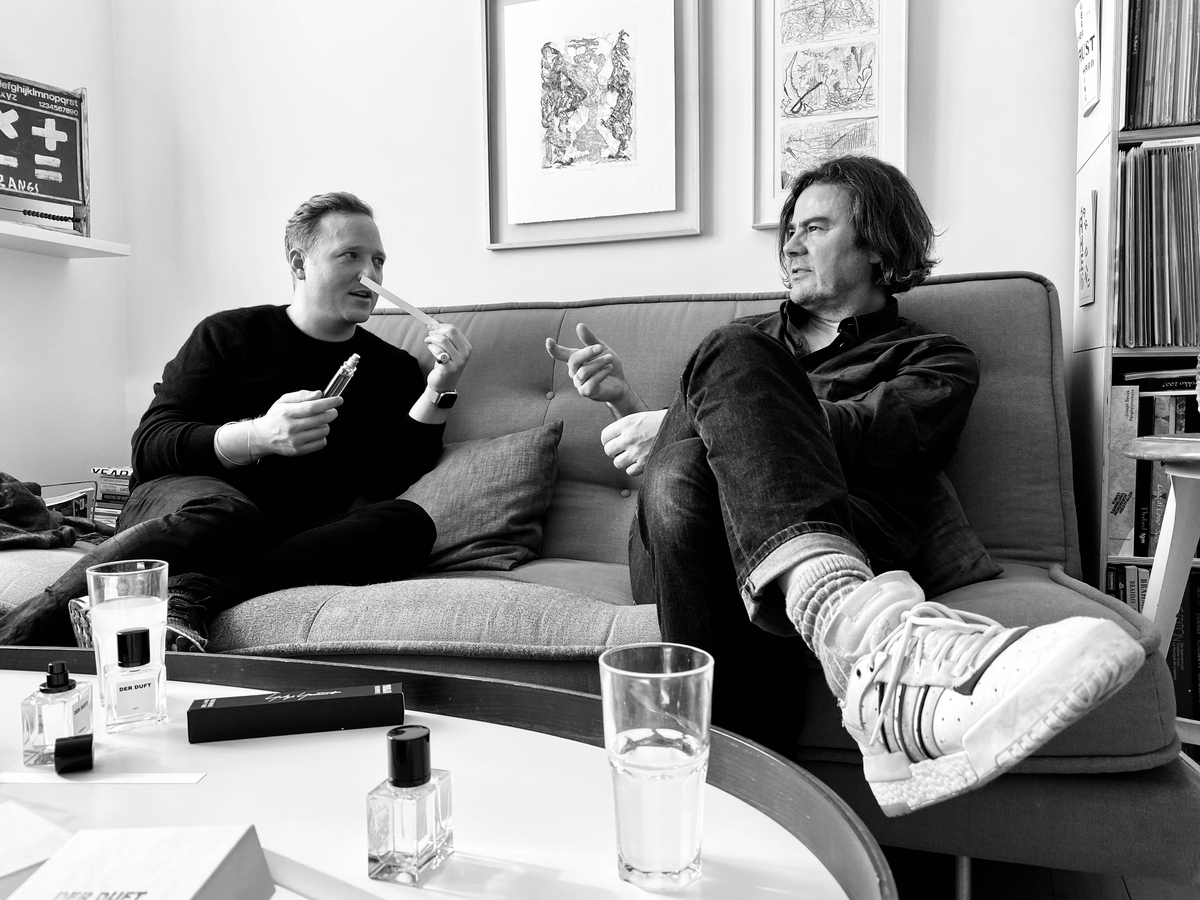
My questions are checked off. I thank Anselm for his time for an extensive interview. We're in the mood for some distraction and fun, so I suggest to raid the perfume package that just arrived and to sample ‚Yohji Homme‘. The fragrance lands on a testing strip which I hold under Anselm‘s nose. After a moment of short focused concentration his mimic relaxes and a glow lightens up his face: “I like it. Wow!“ There is nothing more to say and Anselm doesn‘t say anything else. Such is scent: lively, present and full of emotions. Nothing else ...


